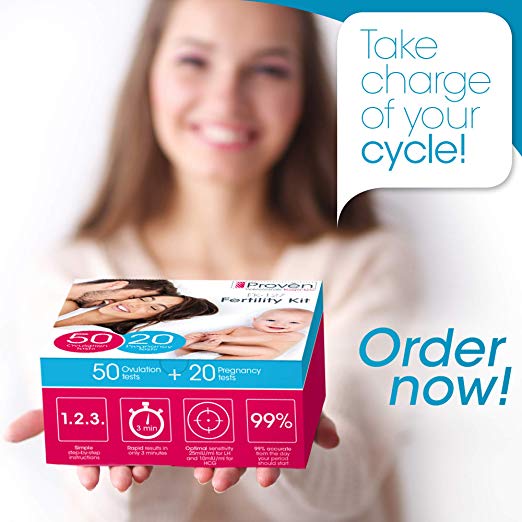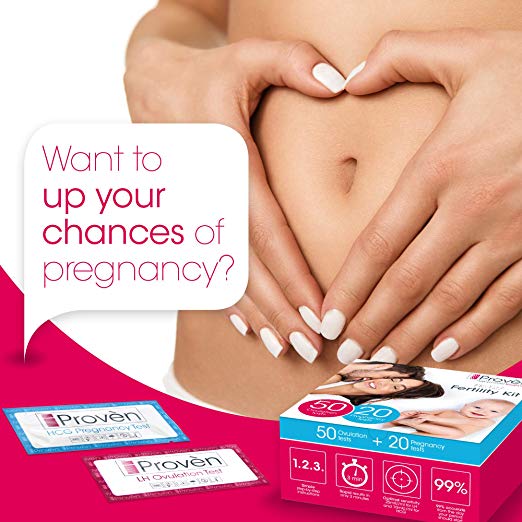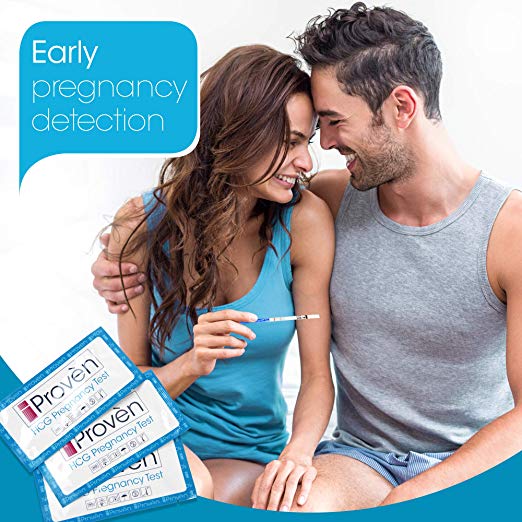Becoming pregnant isn’t always a simple task—especially when you consider there are only about six to seven days per menstrual cycle when conception can occur. That means timing is everything, something Kate White, MD, MPH, knows firsthand. “I’m the classic type-A personality who wanted to make sure I was maximizing all my chances of getting pregnant,” says White, an assistant professor of obstetrics and gynecology at Boston University. “I never thought I’d see the day my husband didn’t want to have sex. But I clearly remember after months of planning sex, one night when I said it was time, he gave me a tired look and said, ‘It’s fine, I can rally!’ I responded, ‘I can’t believe you have to rally to have sex!’”
White is describing a scenario that might sound familiar to many people on a mission to become pregnant. And when sex becomes mission-driven, it can also become kind of a bummer.
“Not that sex the rest of the month isn’t fun!” says White. “But if you get to that point when sex begins to be seen as a chore or a job, you’ll especially want to make sure you’re having it at the times of the month when it can help you the most.”
While documenting your menstrual cycles (as you can with Fitbit’s Female Health Tracking) can go a long way in helping you better predict your most fertile days, additional tools may further improve your accuracy. One common strategy for increased success? A home ovulation test kit.
Sometimes referred to as OPKs (ovulation predictor kits), these over-the-counter test kits are intended to measure the amount of luteinizing hormone (LH) in a woman’s urine. When LH rises, it signals one of the ovaries to release an egg (a process known as ovulation that takes place over the span of 12 to 24 hours), so knowing when the hormone will surge can help guide women with a pregnancy plan.
Ovulation Test Strips and Pregnancy Test Kit – 50 LH and 20 HCG – available on Amazon.com
How Ovulation Predictor Kits Work
Most OPKs contain five to 10 test sticks that a woman can either urinate directly on or dip into a sterile container of collected urine. Testing should occur around the approximate time of ovulation, but there’s a lot of variability. In a textbook 28-day cycle, ovulation typically occurs around day 14, but every woman is different and the exact timing can vary from cycle to cycle (this is why period tracking can come in handy). If the test result is “positive” (sometimes indicated by a color change or a positive sign on the stick), that means ovulation could occur in the next 12 to 24 hours.
“You should use them at the same time every day so you have the best chance of figuring out the ovulation window,” says White. “You have to figure out a time that works every day and that can be challenging.”
The Potential Pitfalls of Ovulation Predictor Kits
The biggest issue with OPKs is the fact that timing really is of the essence when it comes to conception; unfortunately, even if a woman were to catch herself in the midst of a LH surge, it may already be too late to conceive during that cycle. That’s because the egg released during ovulation is only viable during those 12 to 24 hours, so even if a test indicates a positive result, it’s impossible to know when the LH surge actually occurred and whether ovulation has already happened. “The best chance of conceiving comes with intercourse before ovulation,” White explains. “And when the OPK is positive, you may have just ovulated already. So there is still a window in which you can conceive, but it may be small.”
“You want to have intercourse right before ovulation so you have sperm at the ready when the egg appears,” says White, pointing out the fact that sperm can live for up to five days after sex. “LH is one of the better ways to predict that, but it’s not a guarantee. You don’t know at what point after the surge you’re catching it. So if you dip the indicator in your urine in the morning and you get a positive result, you could have ovulated at 4 a.m. that day or in the afternoon the day before, or any time since the last test.”
 And while taking multiple tests per day may seem like a good way to sidestep that problem, that technique can get pricey. ”Some tests can be taken every 12 hours, but that starts to get expensive, so most women don’t,” says White. (Kit prices vary quite a bit—some brands sell packs of 50 strips for under $20, while others sell digital readers and 20 strips for twice the price.)
And while taking multiple tests per day may seem like a good way to sidestep that problem, that technique can get pricey. ”Some tests can be taken every 12 hours, but that starts to get expensive, so most women don’t,” says White. (Kit prices vary quite a bit—some brands sell packs of 50 strips for under $20, while others sell digital readers and 20 strips for twice the price.)
The good news: Because there’s so much variability on the market, there are plenty of opportunities to find a product that fits your needs and budget. “Some might be harder to interpret than others,” says White. “Be sure to look at the back of the box to see what signals you need to be looking for on the test. Try it for a month, and if it seems confusing, don’t hesitate to change kits and try something different. ”
Ovulation Test Strips and Pregnancy Test Kit – 50 LH and 20 HCG – available on Amazon.com
Whether or not you decide to make OPKs a part of your pregnancy journey, it’s important to keep a realistic perspective on the timing of conception. “Even if the timing is right, I like to remind couple there’s a 20 percent chance you’ll conceive, so it can take months, and that’s okay,” says White.
White says a young, healthy couple should reasonably try to conceive for a year before seeking medical help. If you’re over 35 or suspect you may have other reasons for possible decreased fertility, then, says White, “you should only try for six months before seeing a doctor.”
The post Using Ovulation Predictor Kits to Help You Get Pregnant? Here’s What You Need to Know appeared first on Fitbit Blog.







Wow, amazing blog format! How lengthy have you been blogging for?
you made blogging glance easy. The full glance of your web site
is great, as well as the content!
I like the valuable information you provide in your articles. I will bookmark your blog and check again here frequently. I am quite sure I’ll learn plenty of new stuff right here! Good luck for the next!